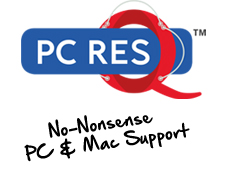The relief was clear to see…
I did a job last week for a lady in Teddington who runs her own business.
Her main concern was to do with her emails; and a lot of them.
From the initial call, Claire explained that she was becoming overwhelmed with the masses of emails arriving daily to her Inbox.
Just to get an idea of the magnitude, I asked her roughly how many emails she was getting per day.
She replied with around fifty to seventy emails.
My immediate thought was that it didn’t seem to be that many.
But that wasn’t the full story….
Claire went on to explain that she spends a lot of time out of the office visiting clients using a combination of her laptop, iPhone and also her iPad when she leaves her laptop behind.
The problem was that she was getting a copy of all emails on her office computer, laptop, iPhone and iPad even if a particular email was dealt with, read and deleted before-hand.
Email is supposed to make life easier but like most things, if it’s setup in the least effective way, it can be time consuming, stressful and a very unproductive use of a person’s time.
All of a sudden you find the emails are controlling you not the other way round.
This was a classic case of an email system being badly configured and quadrupling the workload and stress involved.
Does this sound familiar?
So on an average day, if Claire got say fifty emails, she would deal with those emails on her work computer and if the laptop hadn’t been switched on for three days, she’d get 150 emails coming in and all these emails were one’s she’d already dealt with on her main computer. Nightmare!
I have to be honest I felt quite exhausted just listening to Claire’s daily email battle.
In addition to this, when emails were sent from a computer or mobile device, the email sent wouldn’t appear on any of the other devices, so she had no means of referring back to a sent email on a device that wasn’t used to send it initially.
As Claire was running her own business and relied heavily on emails, contacts and calendar for appointments, I told her that the POP3 configuration she was using was completely impractical and not fit for purpose.
The system I advised her to use was Office 365 which is built on the Microsoft Exchange platform and explained that the new setup would keep all the information in sync across all her computers and devices.
So if she sent emails from her iPhone or iPad while on the road, they’d show in the Sent Items on her main computer and laptop.
As I explained this to her, the relief on her face was a picture.
She couldn’t believe that she’d put up with such an antiquated system for so long.
Claire could see the new system saving her hours in a typical week.
Office 365 is what I recommend to all businesses and it’s a great system to have in the event of a disaster as all the emails and other information is stored securely in the Cloud with a copy held on the computer.
So if a computer completely crashes, you simply need to configure the email account on a replacement machine and it’ll pull down all the emails, contacts and calendar information to the computer from your account in the Cloud.
Even if you don’t run a business and like the idea of keeping your emails in sync, you can still do this by using the IMAP feature.
With IMAP though, you are restricted in syncing the emails only.
Then again, if you access your emails from one computer and nothing else, then the POP3 way is sufficient but you need to bear in mind that the emails will be stored on your computer only after the emails are downloaded from the mail server.
So with POP3, you need to ensure you backup your email files regularly.
Email’s a fantastic tool if setup in the correct and most effective way for your needs but if not, it can be a right headache as demonstrated in Claire’s business.





